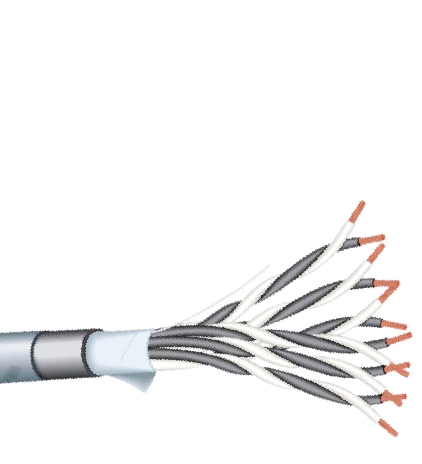Operating Temperature
-20 °C to +80 °C (for general use)
-40 °C to +90 °C (on request)
Minimum Bending Radius
Not armoured type:
12 times the outer diameter (for conductors class 1 and class 2)
10 times the outer diameter (for conductors class 5)
Armoured type:
15 times the outer diameter.
Applicable Standards
BS 5308 or
EN 50288-7 Basic design
IEC 60332-1 Flame retardant
IEC 60332-3 Fire retardant (cat. C or A according to requirements)
IEC 60754-1 Halogen free properties (only for LSZH cables)
IEC 61034-2 Low smoke emission (only for LSZH cables)
Available on request
Tinned conductors
Single triad or multitriads
Galvanized steel wire braid (GSWB) or galvanized steel tape armour (GSTA)
Different insulation and sheath colours
Sheath materials can be provided for excellent water, oil, hydrocarbons,
UV resistance or other special performance.




